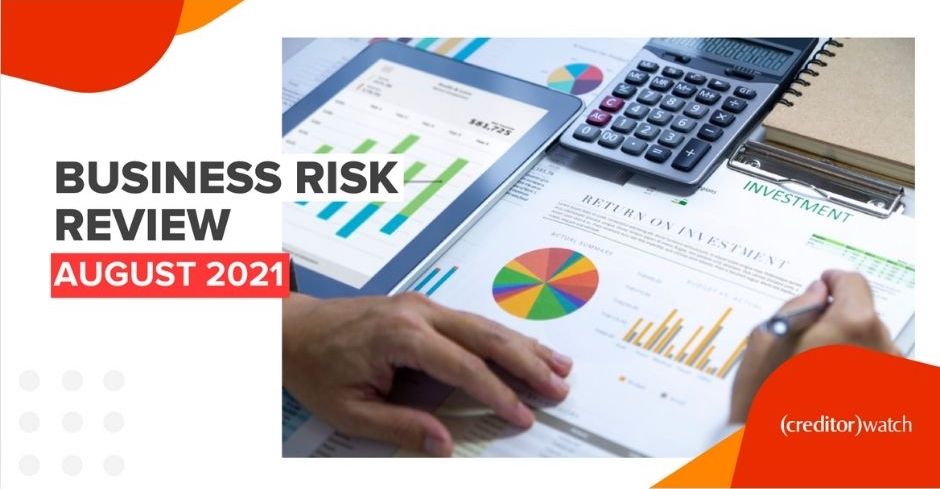Does a sharp rise in administrations hint at tough times ahead?
High-level data from February’s Business Risk Review:
- 61% increase in external administrations compared to January 2021, but a 50% decrease when compared to February 2020.
- 29% uptick in credit inquiries recorded on CreditorWatch month-on-month
- 3% decrease in court actions month-on-month and 56% decrease year-on-year
- 6% drop in payment defaults month-on-month
There are signs that Australian businesses are adjusting to the “new normal” with credit enquiries jumping and trading conditions improving after the height of the pandemic. Having been in decline for the previous 12 months, the number of external administrations have also soared by more than 50 per cent in February compared to the previous month, hinting insolvencies are poised to return to historic levels.
“This is a sign of the commercial climate returning to more normal conditions,” said Mr Patrick Coghlan, CEO, CreditorWatch. “This figure is likely to rise again in the coming months, as JobKeeper ends and the three-month reprieve on credit arrangements for struggling smaller businesses comes to a close,” he said.
Last year, the federal government put in place a temporary moratorium on insolvent trading to allow businesses that were solvent prior to the pandemic to trade through it, giving them time to right their operations as the economy normalises.
While this provision ended on 31 December, businesses with debts of under $1 million were given an additional three months to work with an insolvency practitioner to restructure their operations and come to agreements with creditors to allow them to continue trading. This, along with the JobSeeker wage subsidy, comes to an end on 28 March.
“This could prompt a rash of insolvencies and, subsequently, redundancies, which could be a destabilising force on the local economy. The number of arrears and court cases related to bad debts tend to rise before insolvency numbers lift, and whilst there’s no evidence of this yet, an increase following the end of government incentives at the end of March is a strong possibility,” Mr Coghlan said.
Credit inquiries on the rise
A monthly rise in credit inquiries indicates businesses are stocking up and buying the underlying materials required to make products and services to fuel economic growth. There are already signs economic growth is poised for a strong upswing, given GDP for the December quarter grew by 3.1 per cent, a significant turnaround from the 2020 mid-year recession.
Payment time data from key industries
According to the February CreditorWatch Business Risk Review, only four out of 19 industry groups reported a decrease in the time it takes them to pay their bills, when compared to January 2021.
 Click on the graph above to expand
Click on the graph above to expand
| Sector | Monthly change (%) | Annual change (%) | Commentary |
| Healthcare and social assistance | 2 | 294 | On an annual basis, health is by far the worst-performing sector when it comes to payments. This can be attributed to challenging conditions as the industry remains focused on the pandemic to the detriment of the health system as a whole. But as the monthly number shows, it looks like conditions are improving, with payment times only increasing marginally month-on-month.
|
| Wholesale trade | 3 | 79 | Wholesale trade has been impacted by global supply chain disruptions as a result of the pandemic, but, like health, it appears payment times are returning to pre-COVID levels.
|
| Administrative and support services | 4 | 71 | Admin and support services have suffered as offices have remained empty through the pandemic, though encouragingly, this sector is starting to normalise as workers return to offices.
|
| Construction | 5 | 39 | It’s a tale of two cities in construction, with lacklustre activity in commercial building dragging down the otherwise-buoyant residential sector, which is being held up by government incentives.
|
| Mining | 63 | 0 | Mining is bucking the trend of many other sectors, recording a large monthly rise in payment times, but a flat annual result.
|
| Manufacturing | -7 | 4 | Payment times are dropping in manufacturing on a monthly basis, which reflects the renewal the local sector has enjoyed thanks to pandemic-induced border closures.
|
| Accommodation and food services | -12 | -50 | A great result for this sector, with both the monthly and annual figures indicating payment times are coming down. This trend should continue as travellers are forced to remain at home, helping to support the domestic tourism market. |
What’s the outlook?
Expect the rubber to really hit the road in trade payments in the March CreditorWatch Business Risk Review. With the end of government stimulus, there’s every chance the number of court actions and insolvencies will rise.
Data accurate as of March 1 2021. ASIC data subject to change.



